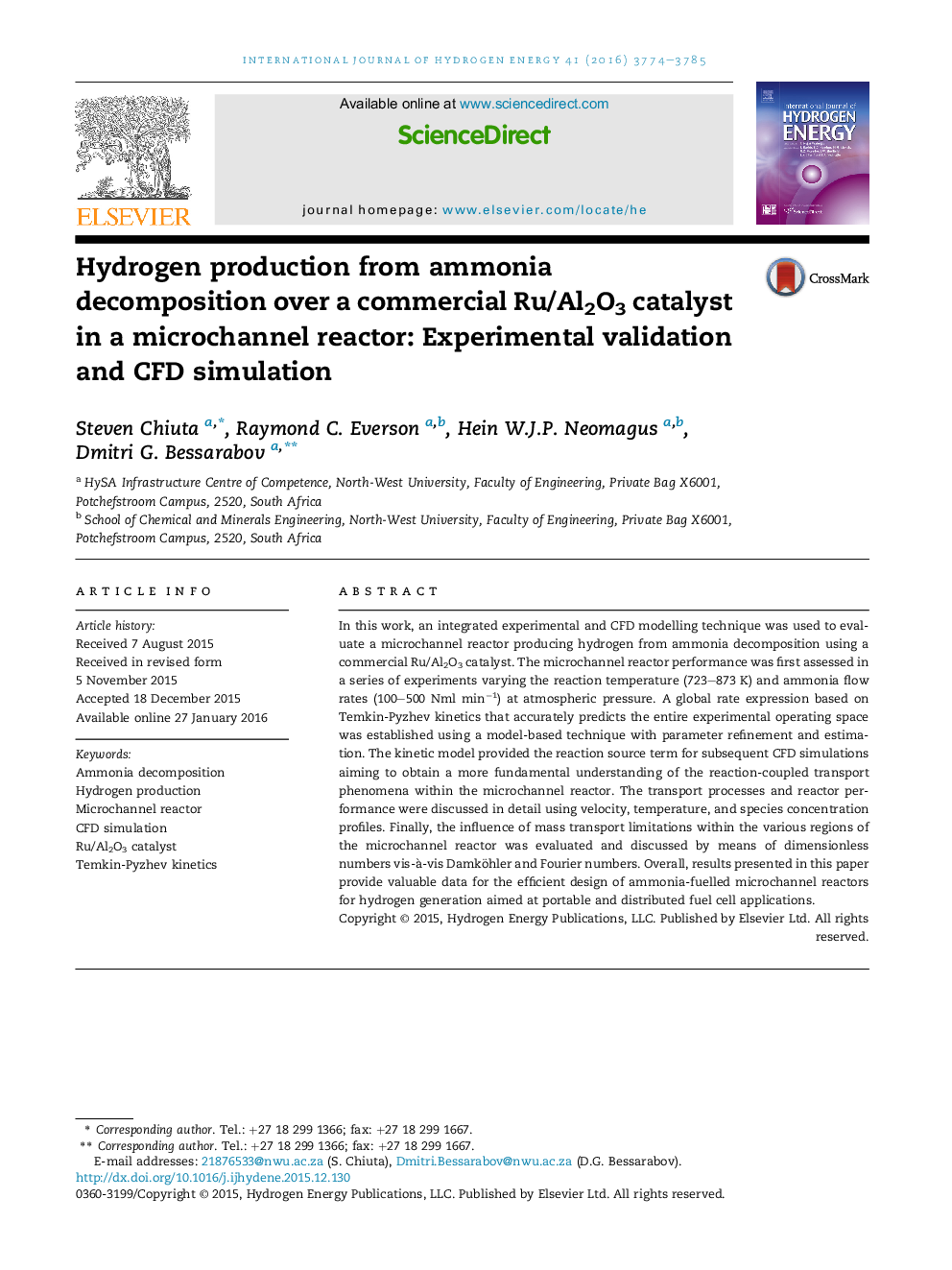| Article ID | Journal | Published Year | Pages | File Type |
|---|---|---|---|---|
| 1277906 | International Journal of Hydrogen Energy | 2016 | 12 Pages |
•A combined approach with experiments and computational fluid dynamics is presented.•H2 production equivalent to a reactor power density of 164 kWe L−1.•A Temkin-Pyzhev global rate law to predict experimental data is developed.•CFD model identified operational limits and reaction-coupled transport phenomena.
In this work, an integrated experimental and CFD modelling technique was used to evaluate a microchannel reactor producing hydrogen from ammonia decomposition using a commercial Ru/Al2O3 catalyst. The microchannel reactor performance was first assessed in a series of experiments varying the reaction temperature (723–873 K) and ammonia flow rates (100–500 Nml min−1) at atmospheric pressure. A global rate expression based on Temkin-Pyzhev kinetics that accurately predicts the entire experimental operating space was established using a model-based technique with parameter refinement and estimation. The kinetic model provided the reaction source term for subsequent CFD simulations aiming to obtain a more fundamental understanding of the reaction-coupled transport phenomena within the microchannel reactor. The transport processes and reactor performance were discussed in detail using velocity, temperature, and species concentration profiles. Finally, the influence of mass transport limitations within the various regions of the microchannel reactor was evaluated and discussed by means of dimensionless numbers vis-à-vis Damköhler and Fourier numbers. Overall, results presented in this paper provide valuable data for the efficient design of ammonia-fuelled microchannel reactors for hydrogen generation aimed at portable and distributed fuel cell applications.
